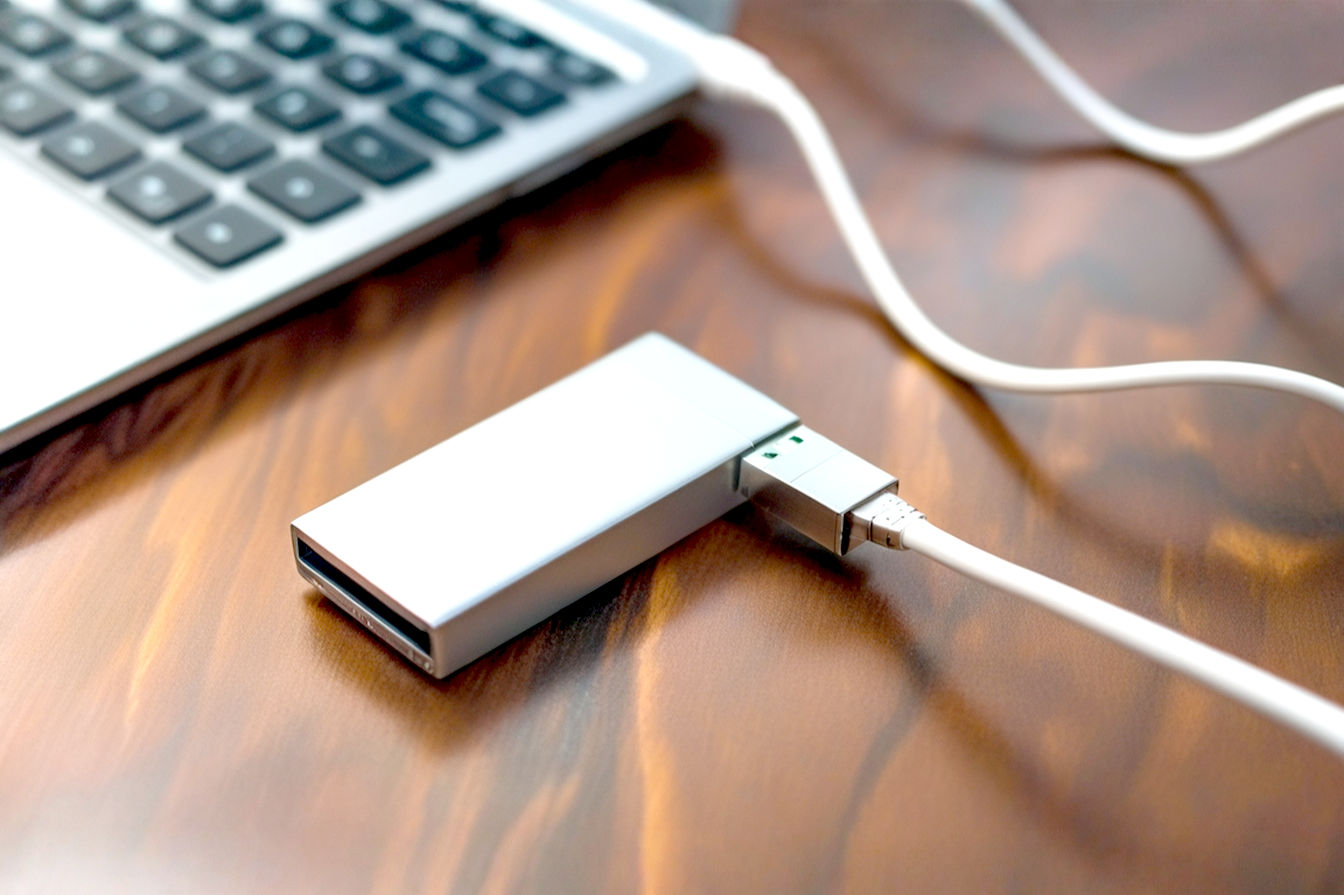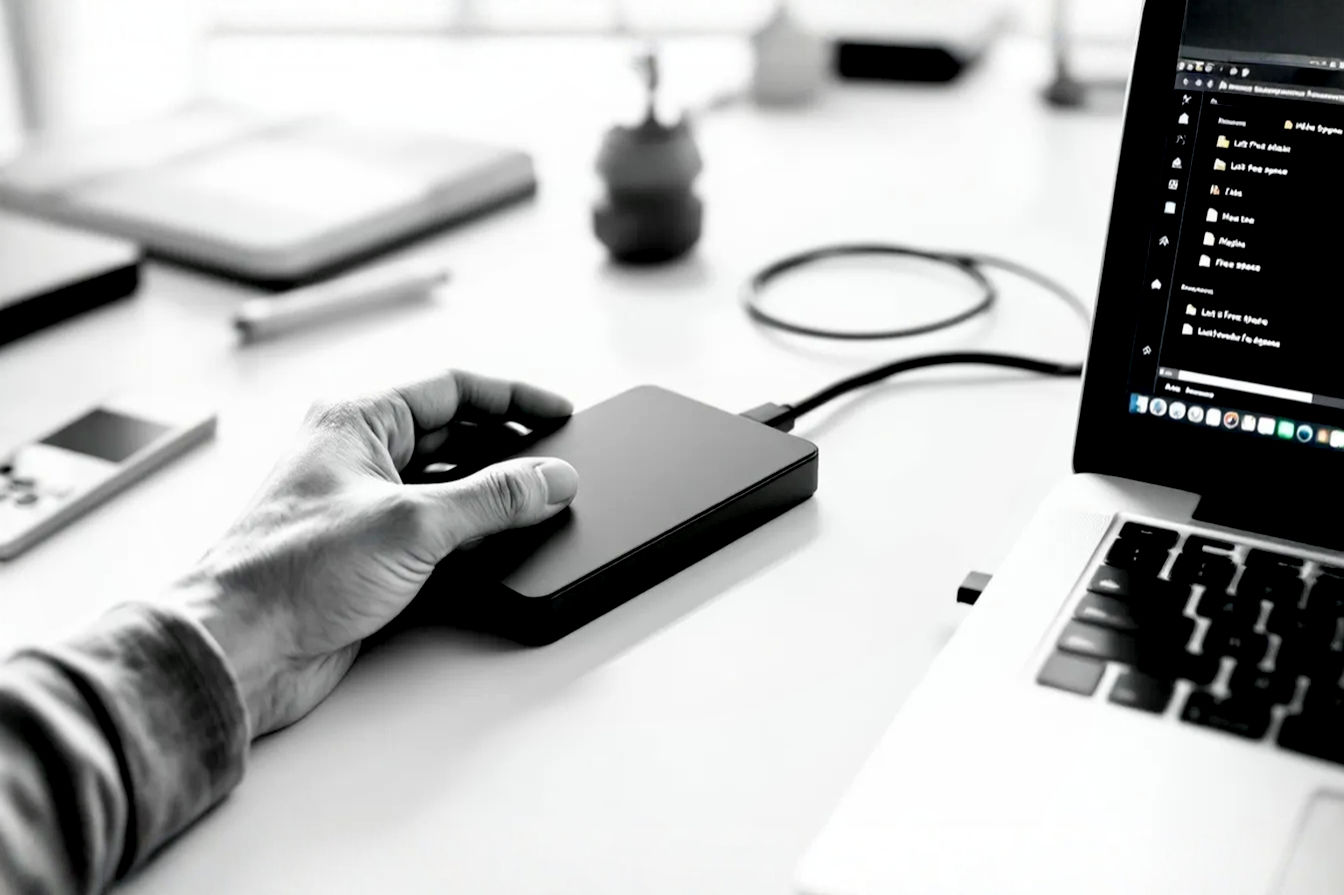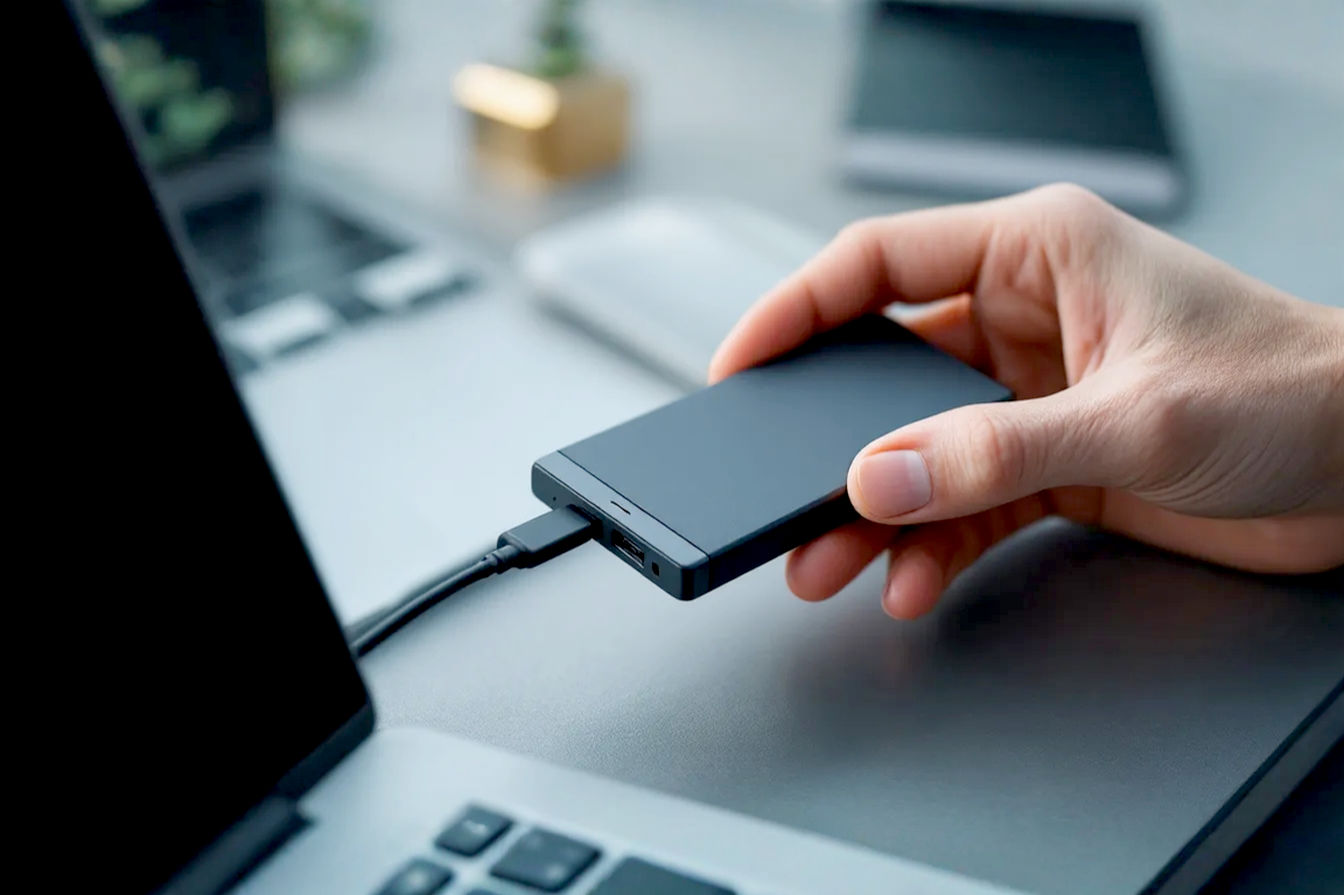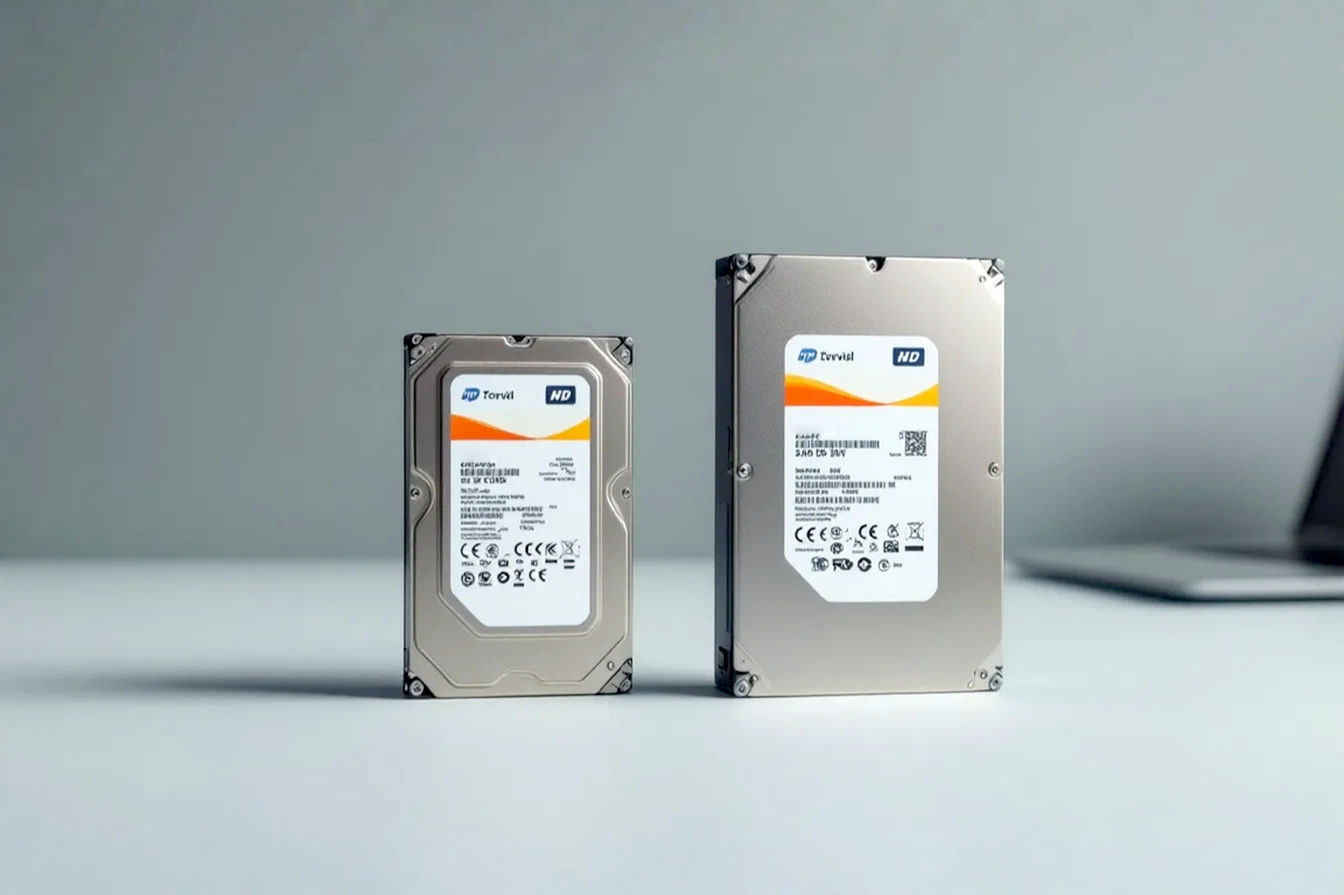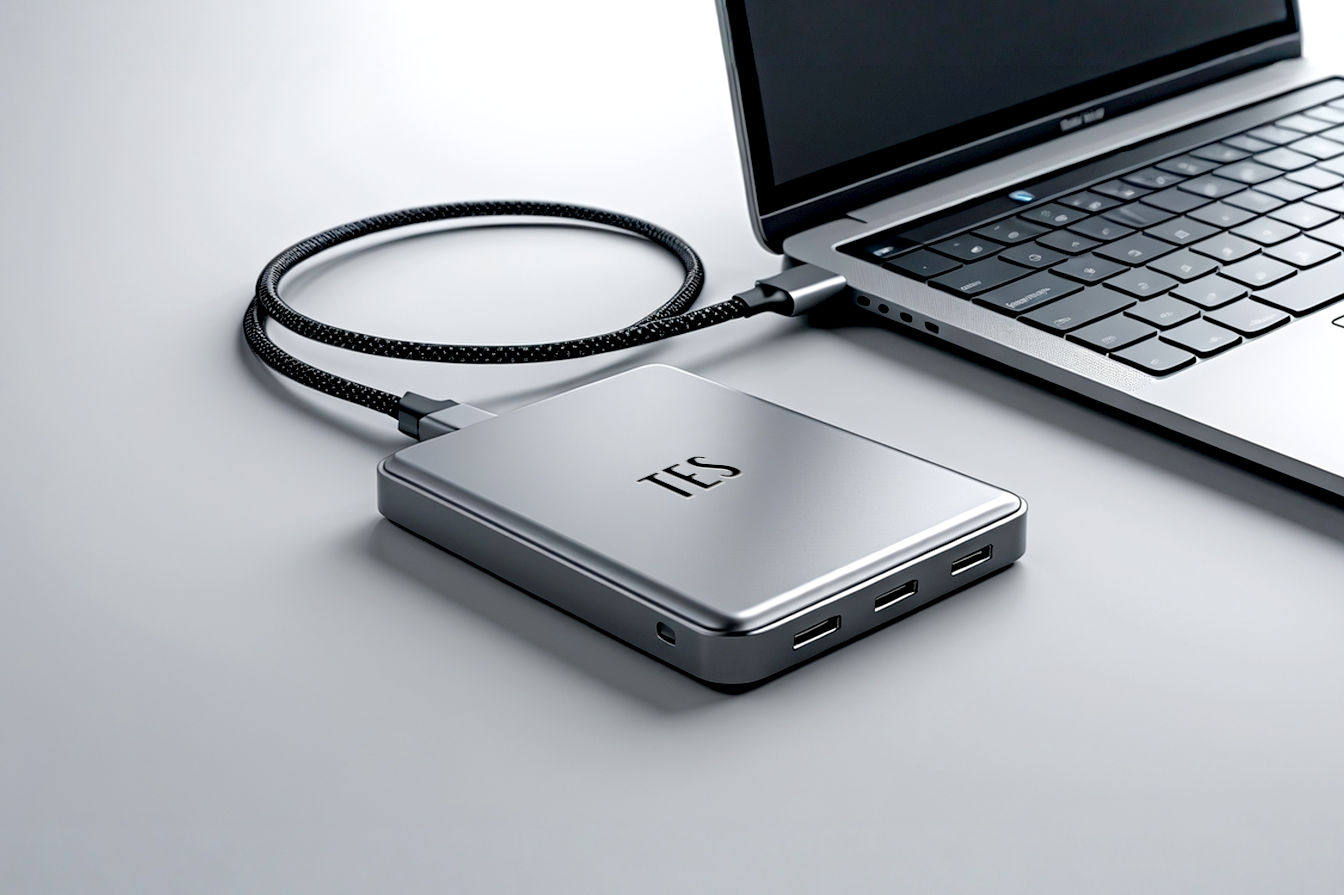This post may contain affiliate links. If you make a purchase through these links, we may earn a commission at no additional cost to you.
Even in today’s digital age, where streaming and cloud storage are everywhere, burning discs still has its place. Maybe you need to create a backup of important photos, share a video with someone who isn’t tech-savvy, install older software, or even archive data for the long haul. Whatever the reason, a reliable USB DVD writer is a handy tool to have. But with so many options out there, how do you pick the right one?
Choosing the best external DVD burner isn’t just about grabbing the cheapest one you see. Different drives offer different features, speeds, and capabilities. This comprehensive guide will walk you through everything you need to know to make an informed decision, ensuring you get a drive that meets your specific needs for burning discs. We’ll break down technical terms, explain key features, and help you understand what really matters when you’re shopping for a USB DVD writer.
Understanding USB DVD Writers
So, what exactly is a USB DVD writer, and how does it work? Simply put, it’s a device that connects to your computer via a USB cable and allows you to read data from and write data to (or “burn”) CDs and DVDs. Unlike internal drives that sit inside your computer’s case, a USB DVD writer is external, meaning you can plug it into any computer with a compatible USB port.
At its core, a DVD writer uses a laser to interact with the disc. When reading a disc, the laser shines on the surface, and a sensor detects the reflections. The patterns of these reflections correspond to the data stored on the disc. When writing, a more powerful laser actually changes the physical properties of a special dye layer on a blank disc, creating marks that represent the data. This process is commonly called “burning” the disc because the laser essentially “burns” these marks into the dye layer.
Internal vs. External Drives
For years, most desktop and even many laptop computers came with built-in internal DVD drives. These drives were permanently installed inside the computer’s chassis, connected directly to the motherboard via interfaces like SATA. They drew power directly from the computer’s power supply.
An external, or USB, DVD writer, on the other hand, is a separate peripheral device. It connects to your computer using a USB cable for both data transfer and often power. This offers significant advantages, especially now that many modern laptops and even some desktops no longer include internal optical drives. Portability is a major plus; you can easily move a USB drive between different computers. Setup is usually plug-and-play, meaning you just connect it, and your operating system recognizes it automatically without needing to open your computer case.
USB Connection Types
The type of USB connection a DVD writer uses is crucial because it affects data transfer speed and, in some cases, power delivery. You’ll commonly see drives listed with support for USB 2.0, USB 3.0, USB 3.1, or USB-C.
- USB 2.0: This is an older standard with a maximum theoretical transfer speed of 480 Mbps (megabits per second). While sufficient for reading many discs at their standard speeds, it can become a bottleneck when burning at higher speeds or reading high-definition content from discs (though this is less common with DVDs). Many older drives use USB 2.0.
- USB 3.0 (also known as USB 3.1 Gen 1 or USB 3.2 Gen 1): This standard dramatically increased speeds up to a theoretical maximum of 5 Gbps (gigabits per second), which is more than ten times faster than USB 2.0. This speed is more than enough for even the fastest DVD burning or reading. Using a USB 3.0 drive with a USB 3.0 port on your computer will ensure you’re not limited by the connection speed.
- USB 3.1 (also known as USB 3.1 Gen 2 or USB 3.2 Gen 2): This further doubles the speed to a theoretical maximum of 10 Gbps. While overkill for DVD speeds, a drive with USB 3.1 support is future-proof and might offer slightly more stable performance.
- USB-C: This refers to the shape of the connector, not necessarily the speed standard. A USB-C port can support various underlying USB standards, including USB 2.0, USB 3.0, USB 3.1, or even Thunderbolt. Many modern external drives use a USB-C connector for convenience, as it’s reversible and becoming standard on newer computers. You need to check the drive’s specifications to see which USB speed standard the USB-C port actually supports.
Speed Differences and Implications
The difference in USB speeds directly impacts how quickly data can move between your computer and the DVD writer. For simply reading a standard DVD movie (which plays back at a relatively low data rate), even USB 2.0 is fine. However, when you’re burning a full DVD’s worth of data, faster USB speeds mean the data can be sent to the drive more quickly, allowing the drive to potentially burn at its maximum rated speed without waiting for data.
A USB 3.0 or faster connection is highly recommended if you plan to burn discs frequently or need the fastest possible read/write performance. While a USB 2.0 drive will work in a USB 3.0 port (it’s backward compatible), it will only operate at USB 2.0 speeds. To get the benefit of faster speeds, both the drive and the computer port must support the higher standard.
Compatibility
Backward compatibility is a key feature of USB. A USB 3.0 drive will work in a USB 2.0 port, and a USB 2.0 drive will work in a USB 3.0 port. However, the connection will always default to the speed of the slowest device or port in the chain. So, a USB 3.0 drive in a USB 2.0 port runs at USB 2.0 speed. A USB 2.0 drive in a USB 3.0 port also runs at USB 2.0 speed. For optimal performance, match the drive’s USB standard to your computer’s port standard whenever possible. USB-C drives are also often backward compatible if you use an adapter, but again, speed will be limited by the lowest standard.
Key Features to Consider When Choosing
Once you understand the basics of how these drives connect, it’s time to look at the specific features that differentiate one model from another. These features directly impact performance, compatibility, and the types of tasks the drive can handle.
Read and Write Speeds
One of the most prominent specifications you’ll see for any optical drive is its speed rating. This is usually expressed with an “X” factor, like 8X, 16X, or 24X. This “X” represents a multiple of the base speed for that type of disc.
For DVDs, the base speed (1X) is approximately 1.32 MB/s (megabytes per second). For CDs, the base speed (1X) is approximately 0.15 MB/s (150 KB/s).
- DVD Speeds:
- 1X DVD = 1.32 MB/s
- 8X DVD = 8 * 1.32 MB/s = 10.56 MB/s
- 16X DVD = 16 * 1.32 MB/s = 21.12 MB/s
- 24X DVD = 24 * 1.32 MB/s = 31.68 MB/s
- CD Speeds:
- 1X CD = 0.15 MB/s
- 40X CD = 40 * 0.15 MB/s = 6 MB/s
- 48X CD = 48 * 0.15 MB/s = 7.2 MB/s
A drive’s specifications will list different maximum speeds for reading and writing different types of media (DVD-R, DVD+R, CD-R, etc.). For example, a drive might be advertised as “8X DVD-R Write, 24X CD-R Write, 8X DVD-ROM Read, 24X CD-ROM Read.”
Understanding ‘X’ Ratings
The ‘X’ rating indicates the maximum speed the drive can achieve under ideal conditions with compatible media. However, the actual speed might vary depending on the quality of the blank disc, the data being written, and the performance of your computer and USB connection. Drives often use a technique called CAV (Constant Angular Velocity) or CLV (Constant Linear Velocity) or a combination (Zoned-CLV) to achieve these speeds. In simpler terms, the drive might start burning at a lower speed on the inner part of the disc and gradually increase speed as it moves towards the outer edge to maintain a consistent data density.
Impact on Burning Time
Higher write speeds mean shorter burning times. Burning a full 4.7 GB single-layer DVD at 8X takes roughly 8-10 minutes. Burning the same disc at 16X could take closer to 5-6 minutes. While faster is generally better, the difference between, say, 16X and 24X for a single-layer DVD might only save you a minute or two. For most users, an 8X or 16X DVD write speed is perfectly adequate. CD burning is much faster due to the lower data capacity; a full CD can be burned in just a few minutes even at moderate speeds.
Optimal Speeds for Different Tasks
While a drive might support high speeds, sometimes burning at a slightly lower speed can result in a more reliable burn, especially with lower-quality media. For critical data backups or discs you want to last a long time, burning at 4X or 8X for DVDs is often recommended over the maximum speed. For everyday tasks like burning a music CD or a temporary data disc, using the maximum supported speed is usually fine.
Supported Media Types
Not all discs are created equal, and not all drives can read or write every type of optical media. Compatibility with various disc formats is a critical factor.
- DVD-R and DVD+R: These are the most common types of recordable DVDs. Once data is written to them, it cannot be erased or rewritten. Most modern drives can read and write both formats. Historically, there were minor technical differences, but for everyday use, they are largely interchangeable.
- DVD-RW and DVD+RW: These are rewritable DVD formats. You can write data to them, erase it, and write new data multiple times (typically up to 1,000 times). The “+RW” format generally offered slightly faster erasing and writing methods than “-RW,” but again, most modern drives support both. They are useful for temporary storage or discs you update frequently.
- DVD-R DL and DVD+R DL (Dual Layer): These discs have two recordable dye layers, nearly doubling the storage capacity of a standard single-layer DVD (from 4.7 GB to about 8.5 GB). If you need to burn larger amounts of data onto a single DVD, ensure the drive specifically lists support for DVD DL writing.
- CD-R and CD-RW: While this guide focuses on DVD writers, virtually all DVD writers are also fully capable of reading and writing CDs (CD-R for recordable, CD-RW for rewritable). If you still work with CDs, ensure the drive lists compatibility.
- Blu-ray Compatibility: A standard DVD writer cannot write to or read Blu-ray discs. Blu-ray uses a different laser wavelength (blue-violet light) and technology for much higher storage capacity (25 GB for single-layer, 50 GB for dual-layer). If you need Blu-ray capability, you’ll need to purchase a Blu-ray writer (often called a “combo drive” if it also handles DVDs and CDs, or a “Blu-ray burner”). These are typically more expensive than DVD-only writers.
- M-DISC Support: This is a special type of archival media.
- What is M-DISC? M-DISC (Millennial Disc) is a write-once optical media technology designed for long-term data archival. Unlike traditional DVD-R or Blu-ray discs that use organic dyes susceptible to degradation over time, M-DISC uses a synthetic, non-organic “rock-like” material for its data layer.
- Benefits for Archival: This inorganic data layer is much more resistant to environmental factors like light, temperature, and humidity. The manufacturer (Millenniata) claims data written to an M-DISC can last for hundreds or even a thousand years. Standard recordable DVDs might only reliably hold data for 10-20 years, depending on storage conditions and disc quality.
- Why You Might Need It: If you need to archive critical data – like important documents, family photos, videos, or business records – for a very long time without relying on migrating data to new storage formats every decade or two, M-DISC is an excellent option. You’ll need a drive that specifically supports M-DISC writing. Any standard DVD or Blu-ray drive can read a burned M-DISC once it’s been written, but only an M-DISC compatible drive can write to one.
Compatibility
Beyond disc formats, you need to ensure the drive works seamlessly with your computer setup.
- Operating System Compatibility: Most external DVD writers are designed to be plug-and-play with major operating systems like Windows (usually Windows 7, 8, 10, and 11), macOS, and often Linux. However, it’s always wise to check the product specifications to confirm compatibility with your specific operating system version. Some older drives might not have full driver support for the latest OS versions.
- Backward Compatibility (USB versions): As mentioned earlier, USB is designed for backward compatibility. A drive designed for USB 3.0 will work in a USB 2.0 port, albeit at the slower speed. A drive with a USB-C connector might come with a cable or require an adapter to connect to older rectangular USB-A ports. Ensure the necessary cables or adapters are included or readily available if your computer doesn’t have the latest port types.
- Software Bundling: Many external DVD writers come bundled with software. This can range from basic burning utilities to more comprehensive suites.
- Burning Software: This is essential for writing data, music, or video files to discs. Bundled software might be a full version or a limited trial. Popular third-party burning software options include Nero, Ashampoo Burning Studio, ImgBurn (free), and CDBurnerXP (free).
- Playback Software: While most operating systems can play DVD movies, bundled software might offer enhanced features or support for specific formats.
- Backup Software: Some drives include basic backup utilities to help you copy files from your hard drive to discs.
While bundled software can be convenient, don’t let it be the primary deciding factor. Many excellent free and paid software options are available independently. Check reviews to see if the bundled software is actually useful or just bloatware.
Portability and Design
Since it’s an external drive, its physical characteristics matter, especially if you plan to travel with it or use it with a laptop on the go.
- Size and Weight: External DVD writers vary in size and weight. Slimline models are designed to be highly portable, easily fitting into a laptop bag. Standard drives might be a bit bulkier but could offer slightly better performance or more robust build quality. Consider how often you’ll move the drive and how much space you have.
- Power Source: Most modern slimline USB DVD writers are USB-powered. This means they draw all the power they need directly from the USB port on your computer using the data cable. This is incredibly convenient as it eliminates the need for a separate power adapter and reduces cable clutter. However, some older or larger drives might require an external power adapter plugged into a wall outlet. If portability and simplicity are priorities, look for a USB-powered model. Be aware that some USB-powered drives might come with a “Y” cable that requires plugging into two USB ports to draw enough power, especially if one port doesn’t provide sufficient current (this is less common with modern USB 3.0+ ports).
- Build Quality and Durability: The materials and construction affect how well the drive holds up over time, especially if you transport it frequently. Look for drives with a solid feel. Metal casings offer better durability and heat dissipation than plastic, though they might add weight. Read user reviews to see if there are common complaints about flimsy trays or connections.
- Design Aesthetics: While less critical than performance, the look of the drive might matter to you. Drives come in various colors and finishes. Some have sleek, minimalist designs that match modern laptops.
Advanced Features and Technologies
Beyond the basic read/write functions, some drives incorporate technologies that improve performance, reliability, or user experience.
Buffer Underrun Protection
This is a crucial technology for reliable disc burning.
- What it is and why it’s important: Disc burning requires a continuous stream of data from your computer to the drive’s buffer (a small amount of memory). If the computer can’t supply data fast enough, the drive’s buffer can empty, leading to a “buffer underrun.” Without protection, this would ruin the disc, creating a “coaster.”
- How it prevents coaster discs: Buffer underrun protection technology allows the burning process to temporarily pause if the buffer is about to empty and resume seamlessly once data flow is restored. This prevents the laser from making incorrect marks on the disc, saving you from wasting blank media. Virtually all modern DVD writers include some form of buffer underrun protection (often marketed under brand-specific names like “Burn-Proof,” “SafeBurn,” etc.). Ensure the drive you choose has this feature.
Error Correction Technology
Optical drives use error correction codes (ECC) to detect and correct errors that occur when reading data from a disc, whether due to scratches, dust, or manufacturing defects. Better error correction can mean the difference between being able to retrieve data from a slightly damaged disc and not. While specific technologies vary by manufacturer, drives with robust error correction can often read discs that other drives struggle with. This is particularly useful if you need to read older or well-used discs.
Silent Operation Technology
Optical drives, especially when spinning at high speeds, can be noisy. Some manufacturers incorporate technologies to reduce noise during operation. This might involve optimizing spin speeds, using vibration-absorbing materials, or adjusting read speeds when noise is a concern (e.g., when simply playing a movie). If you plan to use the drive in a quiet environment, look for mentions of silent operation features.
Software Matters
While the hardware is important, the software you use to burn discs is equally critical for a successful outcome.
Choosing the Right Burning Software
The software dictates how you interact with the drive to create discs. Features to look for include:
- Ease of Use: A user-friendly interface makes the process straightforward.
- Supported Disc Types: Can it burn data DVDs, video DVDs, audio CDs, mixed-mode discs, etc.?
- Features: Does it offer advanced options like creating bootable discs, copying discs, designing disc labels, or creating disc images (ISO files)?
- Reliability: Does the software reliably interface with the drive and the operating system?
Popular free options like ImgBurn and CDBurnerXP are highly regarded for their capabilities and reliability, especially for data and ISO burning. Paid suites like Nero or Ashampoo Burning Studio often offer more features, including video editing and authoring tools, but come at a cost.
Software Bundled with the Drive
As mentioned, many drives come with bundled software. Sometimes this is a full, useful suite. Other times, it’s a limited trial or basic utility. Don’t assume the bundled software is the best or only option.
- Is it sufficient? For simple data burning, the included software might be perfectly fine. If you need to create complex video DVDs with menus or perform advanced tasks, you might need more powerful third-party software.
- Limitations: Bundled software might have limitations on features, be time-limited (trial), or only support specific operating systems.
Always check reviews of the specific drive model to see what users say about the included software.
Setting Up Your USB DVD Writer
Setting up an external DVD writer is usually a simple process thanks to USB’s plug-and-play nature.
Connecting the Drive
Most drives connect with a single USB cable. Plug one end into the drive and the other into a compatible USB port on your computer. If the drive requires two USB ports for power or uses a separate power adapter, follow the manufacturer’s instructions.
Driver Installation
In most modern operating systems (Windows 7 and later, recent macOS versions, most Linux distributions), the necessary drivers for a standard USB DVD writer are built-in. When you connect the drive, the operating system should automatically detect it and install the generic drivers, making the drive accessible within a few moments. You shouldn’t need to install anything manually from a CD or website unless you’re using a very old OS or a highly specialized drive.
Testing the Drive
Once connected, you can test the drive. Insert a known good CD or DVD (like a movie or software disc) into the drive. Your computer should recognize the disc and either automatically open a window showing its contents or offer options for what to do with the disc (like playing a movie). To test burning, insert a blank disc and try writing a small file to it using your burning software.
Tips for Successful Disc Burning
Burning discs isn’t complicated, but following a few best practices can help ensure successful burns and long-lasting media.
Using Quality Media
The quality of the blank disc you use is just as important as the quality of the drive. Cheap, no-name discs are more prone to errors during burning and can degrade more quickly over time. Investing in reputable brands known for quality (like Verbatim, Taiyo Yuden/JVC – though less common now, and certain lines from Sony or Panasonic) can significantly improve burn success rates and the longevity of your data. Look for discs specifically rated for the speed you intend to burn at.
Burning at Appropriate Speeds
While faster speeds save time, sometimes burning slightly slower than the maximum rated speed of the disc or drive can result in a more accurate and reliable burn. This is especially true for archival data or when using media that isn’t top-tier quality. Experiment with different speeds if you encounter burning errors. Often, selecting half or three-quarters of the maximum speed provides a good balance between speed and reliability.
Closing the Disc (Finalizing)
For a disc to be readable in standard players or other computers, it usually needs to be “closed” or “finalized.” This process writes the table of contents to the disc, making it readable by other drives. If you plan to add more data later (for rewritable discs or multi-session recordable discs), you would choose not to finalize it immediately. However, for a disc you intend to share or play in a standard DVD player, finalizing is essential. Most burning software will ask you if you want to finalize the disc after the burning process is complete.
Handling Discs Properly
Optical discs are susceptible to damage from scratches, fingerprints, heat, and sunlight. Always handle discs by the edges. Store them in cases to protect them from scratches and dust. Keep them away from direct sunlight and extreme temperatures. Proper handling and storage are crucial for preserving the data you’ve burned.
Troubleshooting Common Issues
Occasionally, you might encounter problems with your USB DVD writer or the burning process. Here are a few common issues and potential solutions:
- Disc not recognized:
- Check the physical connection. Is the USB cable securely plugged into both the drive and the computer?
- Try a different USB port.
- Try a different disc. The original disc might be damaged or dirty.
- Restart your computer.
- Check Device Manager (Windows) or System Information (macOS) to see if the drive is detected by the operating system. If not, there might be a driver issue (though rare with modern OS) or a hardware problem with the drive or cable.
- Burning failures:
- Ensure you are using compatible media for the drive and the task (e.g., using a DVD-R disc in a drive that supports DVD-R writing).
- Try burning at a lower speed.
- Use a different blank disc. The original disc might be faulty.
- Ensure your computer isn’t running intensive tasks in the background that might interrupt the data flow to the drive.
- Make sure you have enough free space on your hard drive for temporary files the burning software might create.
- Try different burning software.
- Clean the drive’s lens using a specialized lens cleaning disc.
- Slow speeds:
- Ensure you are connected to a high-speed USB port (USB 3.0 or higher if both the drive and port support it). Remember, the connection speed is limited by the slowest component.
- The burning speed is also limited by the maximum speed supported by the blank media you are using.
- Background processes on your computer can consume resources and slow down data transfer. Close unnecessary applications.
- Driver problems:
- While rare with modern plug-and-play drives, if the drive isn’t recognized at all, check the manufacturer’s website for specific drivers or troubleshooting steps. In Windows Device Manager, you can try uninstalling and then rescanning for hardware changes to force the OS to reinstall the generic drivers.
Popular Brands and Models
Several reputable manufacturers produce reliable external DVD writers. While specific model availability changes, brands like LG, Asus, Samsung, and Lite-On have historically offered good performance and durability.
When looking at models from these brands, you’ll typically find drives offering 8X DVD-R/DVD+R write speeds, 24X CD-R write speeds, USB 3.0 connectivity (often with a USB-C connector option), and slim, USB-powered designs. Many will also feature buffer underrun protection and support for M-DISC writing. Reading user reviews for specific models can provide insight into real-world performance and reliability. Focus on models that consistently receive positive feedback for successful burns and compatibility.
Conclusion
Choosing the best USB DVD writer for burning discs involves considering several factors, from connection type and speed to media compatibility and portability. While internal drives are becoming less common, external USB writers provide a convenient and often necessary way to read and write optical media.
Prioritize drives with USB 3.0 or faster connectivity for optimal speed, support for the specific disc formats you need (including M-DISC if long-term archival is important), and a USB-powered, portable design if you value convenience. Don’t forget the importance of buffer underrun protection for reliable burns and consider the quality of the bundled software (though third-party options are always available).
By understanding the technical specifications and matching them to your intended use, you can confidently select a USB DVD writer that will serve you well for creating backups, sharing files, or archiving precious data for years to come. Happy burning!
FAQs
Q: Can a DVD writer burn Blu-ray discs?
A: No, a standard DVD writer can only read and write CDs and DVDs. Burning Blu-ray discs requires a specific Blu-ray writer, which uses a different laser technology.
Q: Do I need an external power adapter for a USB DVD writer?
A: Most modern slimline USB DVD writers are USB-powered and do not require an external power adapter. They draw all necessary power from the computer’s USB port. However, some older or larger models might still require one.
Q: What’s the difference between DVD-R and DVD+R?
A: Historically, there were minor technical differences in how data was written and finalized, but for most modern drives and everyday use, they are functionally interchangeable. Most drives support both formats.
Q: What is M-DISC and why would I need it?
A: M-DISC is an archival optical media format that uses a non-organic data layer designed to last for hundreds of years. You would need an M-DISC compatible drive to write to these discs, and they are ideal for long-term data preservation where standard discs might degrade.
Q: Can I use a USB 3.0 DVD writer with a USB 2.0 port?
A: Yes, USB is backward compatible. A USB 3.0 drive will work in a USB 2.0 port, but it will operate at the slower USB 2.0 speed. For full USB 3.0 speed, both the drive and the port must support USB 3.0 or higher.


